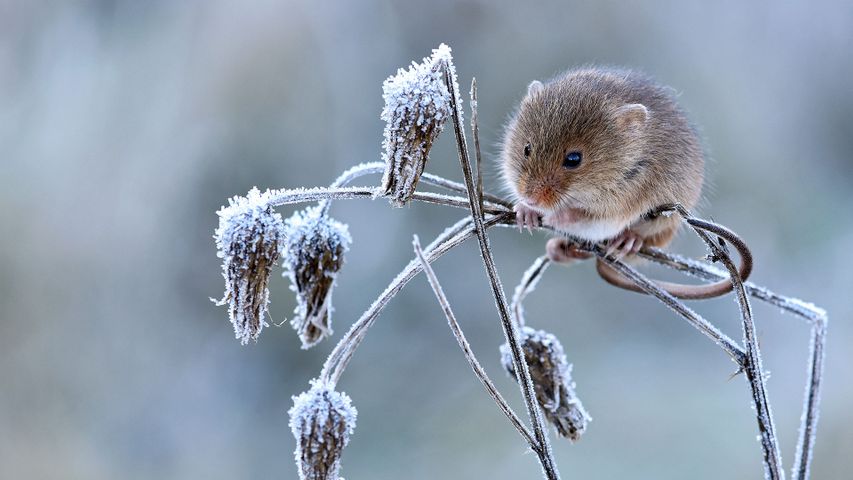Nieve penitente ice formations seen on Agua Negra Pass in the Coquimbo region of the Andes, Chile
© Art Wolfe/Danita Delimon
An icy congregation
If these frozen formations were named by more literal minds, they might have been called 'reverse icicles'. But the Andes, including this mountain pass rising above Chile's Atacama Desert, were mapped by poetically inclined Spanish explorers. They likened formations like these to a kneeling congregation of penitent parishioners: so the packed-snow pinnacles became known as 'penitentes’.
Maybe the most dramatic penitentes appear in dry sections of the Andes, but they can form anywhere the Sun is strong enough to vaporise snow faster than it can melt into water. Since snow isn't a perfectly even surface, some patches of the snowpack turn to vapour faster than others, creating pits that further reflect sunlight upon themselves. This quickens vaporisation within the pits, deepening them, often all the way down to the bare earth. The snow in between is left standing (or kneeling) as penitentes.
Related Images
Bing Today Images



 Yoho National Park, British Columbia, Canada
Yoho National Park, British Columbia, Canada
 View from the cupola of the International Space Station above the South Pacific Ocean
View from the cupola of the International Space Station above the South Pacific Ocean
 Polar bear cub, Churchill, Manitoba, Canada
Polar bear cub, Churchill, Manitoba, Canada
 Castle Stalker on Loch Laich, Argyll, Scotland
Castle Stalker on Loch Laich, Argyll, Scotland
 Sandstone hoodoos, Bryce Canyon National Park, Utah, United States
Sandstone hoodoos, Bryce Canyon National Park, Utah, United States
 Red deer, Canada
Red deer, Canada
 Medieval towers in Mestia, Upper Svaneti, Georgia
Medieval towers in Mestia, Upper Svaneti, Georgia
 Ribblehead Viaduct and Ingleborough mountain, North Yorkshire, England
Ribblehead Viaduct and Ingleborough mountain, North Yorkshire, England



